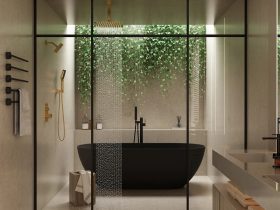Green roof systems, also known as living roofs or eco-roofs, have been gaining significant attention in urban areas as a sustainable solution to combat environmental challenges. This innovative approach involves covering rooftops with vegetation, providing a range of benefits to both the building and the surrounding environment. In this article, we will delve into the reasons behind the growing trend towards green roof systems in urban settings and analyze their impact.

The Environmental Benefits of Green Roof Systems
One of the primary reasons for the increasing adoption of green roof systems is their positive impact on the environment. These systems help reduce the urban heat island effect by absorbing and deflecting heat, thus lowering the overall temperature in densely populated areas. Additionally, green roofs improve air quality by capturing pollutants and producing oxygen through photosynthesis. They also contribute to the conservation of biodiversity by providing habitats for birds, insects, and other wildlife.
The Economic Advantages of Green Roof Systems
Aside from their environmental benefits, green roof systems offer significant economic advantages to building owners and urban communities. By insulating buildings and reducing energy consumption for heating and cooling, green roofs can lead to substantial cost savings on energy bills. Furthermore, green roofs can extend the lifespan of a building’s roof membrane by protecting it from UV radiation and temperature fluctuations, thereby reducing maintenance costs in the long run.
Social and Health Impacts of Green Roof Systems
Green roof systems also have positive implications for human health and well-being. The presence of green spaces in urban environments has been linked to stress reduction, improved mental health, and increased physical activity. Green roofs create opportunities for urban residents to connect with nature and experience the therapeutic benefits of greenery, contributing to a healthier and more livable cityscape.
Challenges and Considerations for Implementing Green Roof Systems
While the benefits of green roof systems are clear, there are challenges and considerations that need to be addressed when implementing these systems in urban areas. Factors such as structural integrity, weight load, maintenance requirements, and initial cost can pose obstacles to widespread adoption. However, advancements in technology and growing awareness of the importance of sustainability are driving the development of innovative solutions to overcome these challenges.
As cities continue to grapple with the impacts of climate change and urbanization, the shift towards green roof systems represents a promising step towards creating more sustainable and resilient urban environments. By harnessing the power of nature to enhance the built environment, green roofs offer a multifaceted solution that benefits the environment, economy, and public health. As the momentum behind green roof systems grows, it is essential for policymakers, developers, and communities to collaborate in promoting the widespread adoption of this eco-friendly technology for a greener future.






